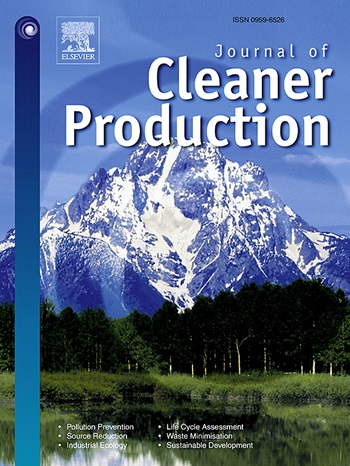结合边际分布采样和机器学习算法,改进水田涡旋相关数据CH4通量的补空方法
IF 9.7
1区 环境科学与生态学
Q1 ENGINEERING, ENVIRONMENTAL
引用次数: 0
摘要
水田涡动相关测量的准确填隙CH4通量对评估农业碳平衡和温室气体排放具有重要意义,从而有助于农业清洁生产。然而,水田作为一种高度管理的湿地,其CH4排放机制与天然湿地不同。对稻田CH4通量数据的处理方法进行了改进。在移动点试验(MP)方法中加入初级生产总值(GPP),可以计算稻田摩擦速度阈值(Uc*)。各站点计算出的Uc*的顺序为:TWT (0.27 m s-1) >;MSE (0.20 m s-1) >;CRK (0.12 m s-1) >;HRC (0.11 m s-1) >;RIP (0.10 m s-1) >;HRA (0.09 m s-1) >;NC (0.08 m s-1) >;CAS (0.05 m s-1)。GPP比CH4通量提前2.5 h,加入了非同步现象,提高了8个点的填隙性能,R2提高了6.3% ~ 16.1%,RMSE降低了8.0% ~ 26.8%,MAE降低了10.5% ~ 25.2%。以地下水位的“开关”效应代替土壤水分条件仅改善了CRK、HRA、HRC、MSE和NC 4个站点的填隙性能,R2分别提高了7.2%、8.1%、10.4%、3.8%和7.1%,且填隙精度的提高与生长季干湿交替次数呈正相关。六种机器学习算法的空白填充效果依次为:Adaboost>;XGBoost祝辞射频比;摘要利用比;SVM和KNN,其中MDS方法比RF方法差。通过解决CH4通量分布不均匀的问题,将MDS方法与机器学习算法相结合,可以提高补隙性能,R2提高0.02 ~ 0.06,MAE降低0.13% ~ 7.88%。综上所述,本研究对稻田CH4通量的数据处理是有益的。本文章由计算机程序翻译,如有差异,请以英文原文为准。

Improving gap-filling methods for CH4 fluxes of eddy covariance data by combining marginal distribution sampling and machine learning algorithm over paddy fields
Accurate gap-filling CH4 fluxes from eddy covariance measurements over paddy fields is important in assessing agriculture carbon balance and greenhouse gas emission and therefore contribute to agriculture cleaner production. However, as a type of highly managed wetland, the mechanisms of CH4 emission from paddy field are different from those from natural wetlands. This study improved the methods to process CH4 fluxes data from paddy fields. Adding gross primary production (GPP) into the Moving Point test (MP) method enables it to calculate the threshold of friction velocity (Uc*) in the paddy fields. The order of calculated Uc* for all sites is: TWT (0.27 m s-1) > MSE (0.20 m s-1) > CRK (0.12 m s-1) > HRC (0.11 m s-1) > RIP (0.10 m s-1) > HRA (0.09 m s-1) > NC (0.08 m s-1) > CAS (0.05 m s-1). GPP is 2.5 hours ahead of CH4 fluxes, incorporating the asynchrony phenomenon improves the gap-filling performance at all 8 sites, with the R2 increases by 6.3%-16.1%, RMSE decreases by 8.0%-26.8%, MAE decrease by 10.5%-25.2%. Replacing soil moisture condition with the ‘on-off switch’ effect of water table only improves the gap-filling performance at CRK, HRA, HRC, MSE and NC sites, with the R2 increase by 7.2%, 8.1%, 10.4%, 3.8%, 7.1%, and the improvement of gap-filling accuracy was positively correlated with times of alternate wetting and drying cycles during the growing season. The gap-filling effect of six machine learning algorithms were in order: Adaboost> XGBoost > RF > BPNN > SVM and KNN, with the MDS method worse than the RF. By solving the uneven distribution of CH4 fluxes, integrating the MDS method into machine learning algorithm could improve the performance of gap-filling, with R2 increased by 0.02-0.06, MAE decreased by 0.13%-7.88%. Overall, the study is benefit for data processing of CH4 fluxes over paddy fields.
求助全文
通过发布文献求助,成功后即可免费获取论文全文。
去求助
来源期刊

Journal of Cleaner Production
环境科学-工程:环境
CiteScore
20.40
自引率
9.00%
发文量
4720
审稿时长
111 days
期刊介绍:
The Journal of Cleaner Production is an international, transdisciplinary journal that addresses and discusses theoretical and practical Cleaner Production, Environmental, and Sustainability issues. It aims to help societies become more sustainable by focusing on the concept of 'Cleaner Production', which aims at preventing waste production and increasing efficiencies in energy, water, resources, and human capital use. The journal serves as a platform for corporations, governments, education institutions, regions, and societies to engage in discussions and research related to Cleaner Production, environmental, and sustainability practices.
 求助内容:
求助内容: 应助结果提醒方式:
应助结果提醒方式:


